A workshop developed by ArtStart director, Carol Sirrine, challenged 13 students to create an “Earthly Shrine” that honored the wonders of nature and addressed the impact that humans have had on the Earth. The artists/naturalists ranged in age from 14-17 years old. At the celebration marking the end of the workshop, artists had a chance to share their finished work, their process and their caring for the Earth.
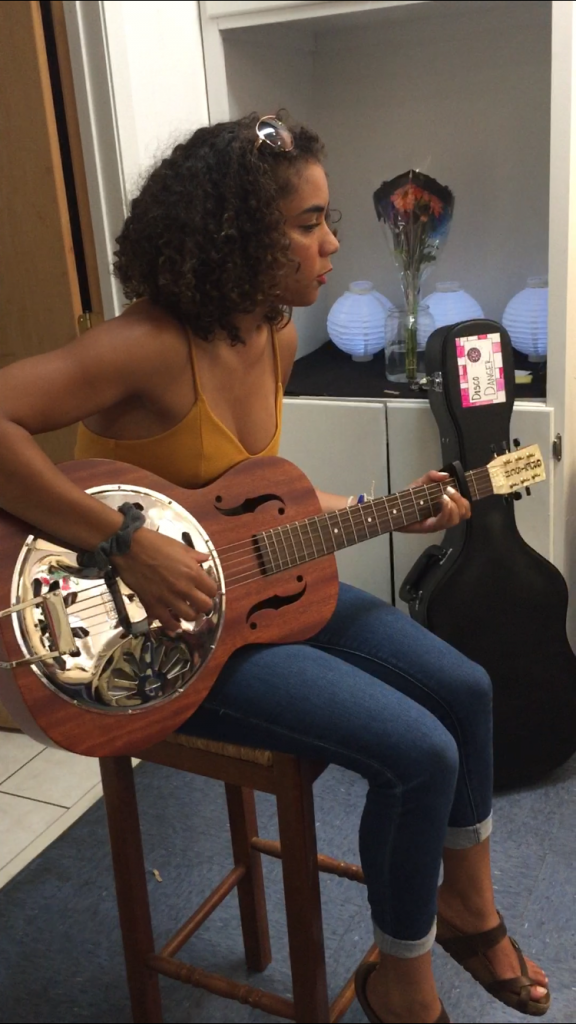
Anissa Wallingford
Songwriter, Anissa Wallingford sang her song, “Quicksand”.
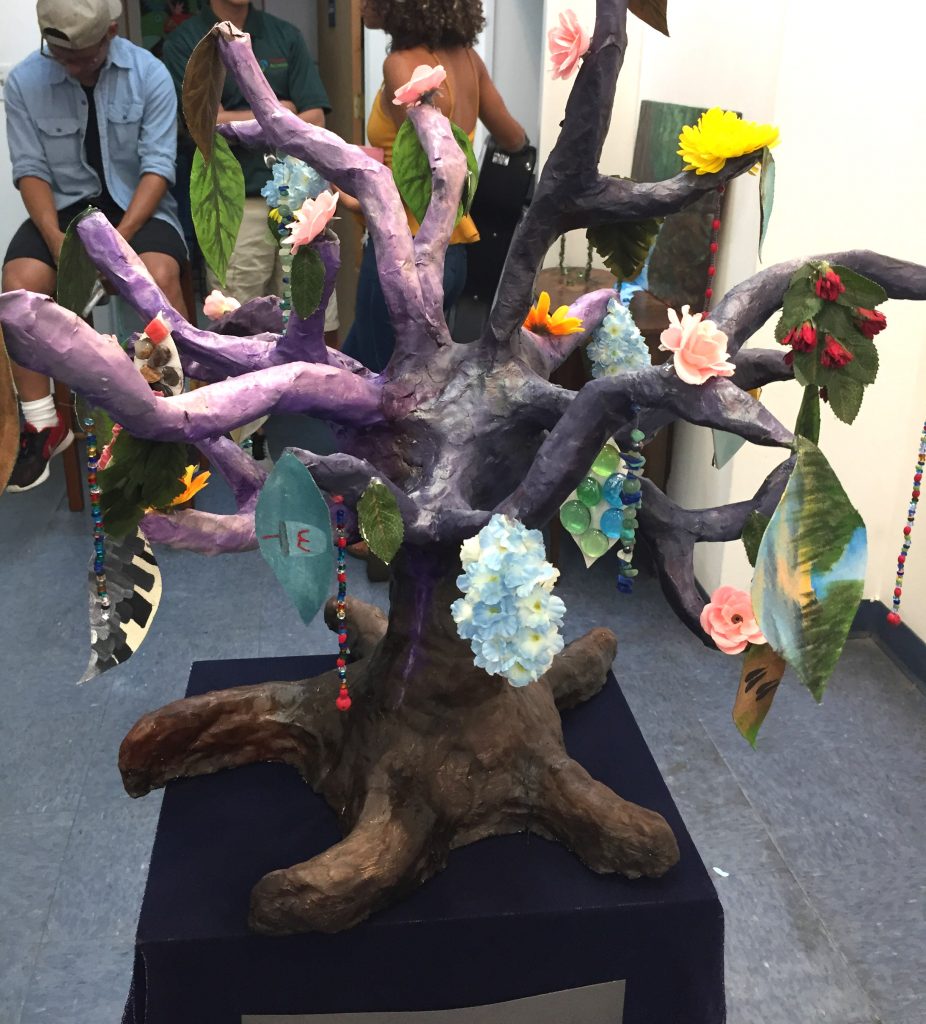
Maeve Murphy
With the use of clay, glass, rocks and many more earthly objects, I hoped to show that we are meant to create a world that complements natural life instead of using its resources for selfish consumeristic actions. I have used recycled plastics and metals to display the reality that we do live in a universe that is plagued with pollution created by man. I hope to demonstrate that there can be beauty in both the natural and unnatural world as long as we continue to love and care for the earth with which we have been granted.
Maeve Murphy
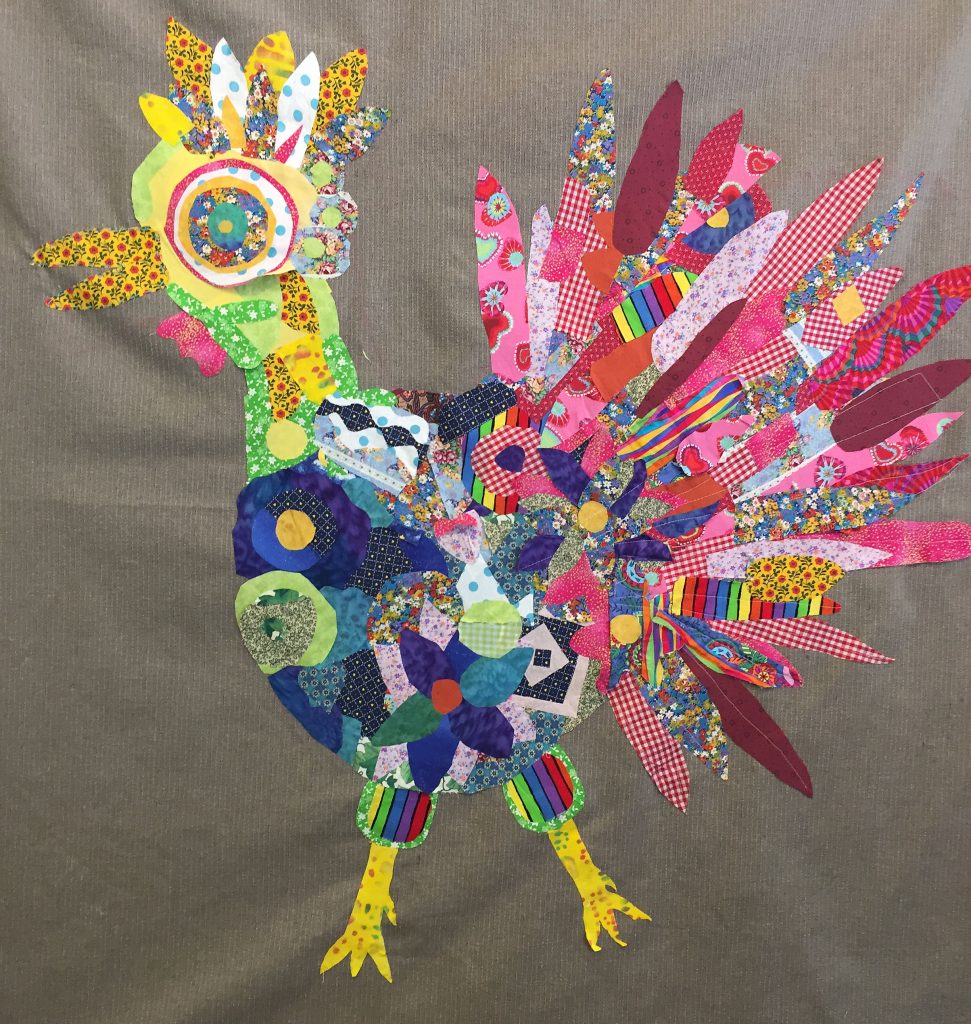
Flannery McGreevey
I wanted to portray the story of an animal living in our present world. I chose to create a chicken that embodies the chaos in our universe. By using many bright busy colors it shows the turmoil that many beings experience. The different textures represent the complexity of the issue we are facing. Although at times the problems of climate change seem overwhelming, there are still things you can do!
Flannery McGreevy
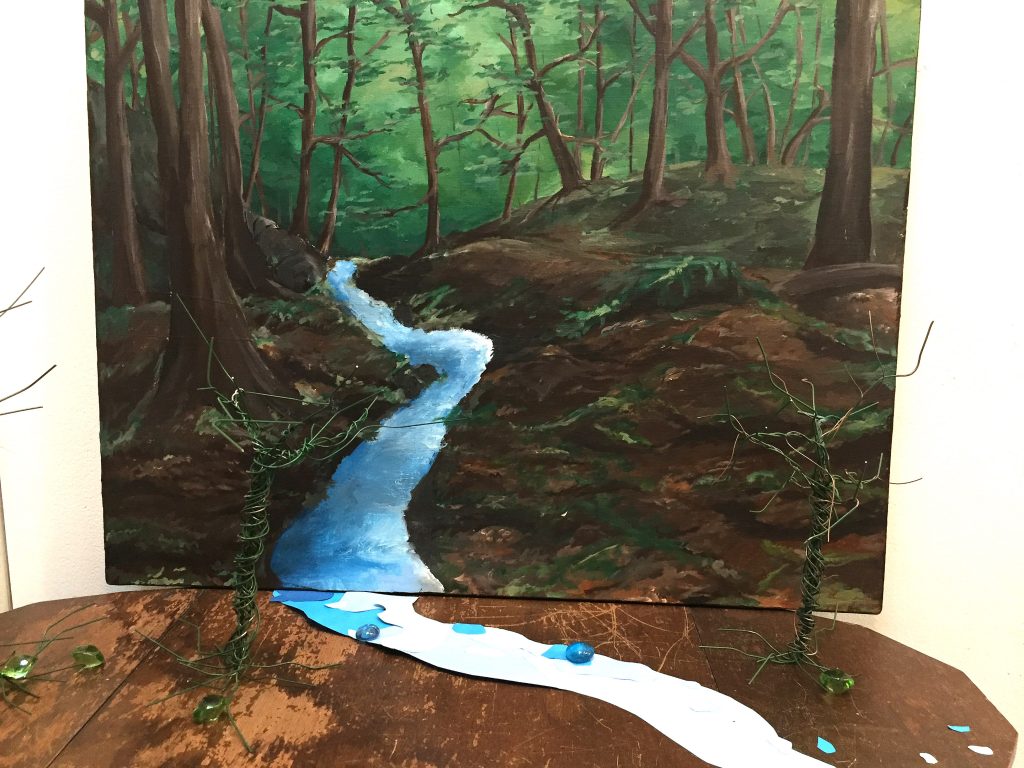
Serena Raths
I wanted to create a piece which literally jumped off of my canvas. I was inspired by our days spent walking beside the Mississippi River. I tried to add as much detail as possible, to demonstrate all of the intricacies which reside within nature. By making the diorama scene out of recycled materials, I wanted to represent the ways in which humans can strip nature of its most beautiful elements and leave it barren.
Serena Raths
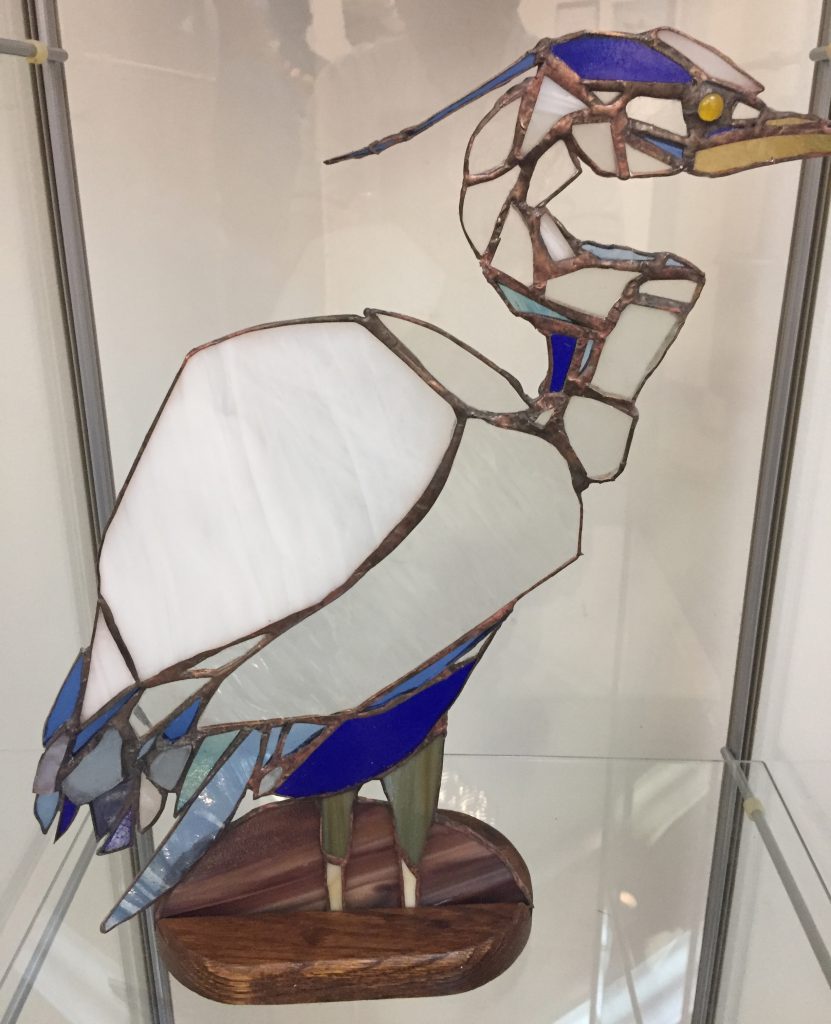
Justine Anderson
For my first foray into stained glass, I chose to depict a great blue heron. We saw many of these birds at the refuge and along the Mississippi River, where I first saw the giant trees where the birds nest. Their stately and graceful movements inspire the kind of reverence I wanted to capture. I thought that stained glass was a fitting medium for a piece meant to honor the sacredness of nature.
Justine Anderson
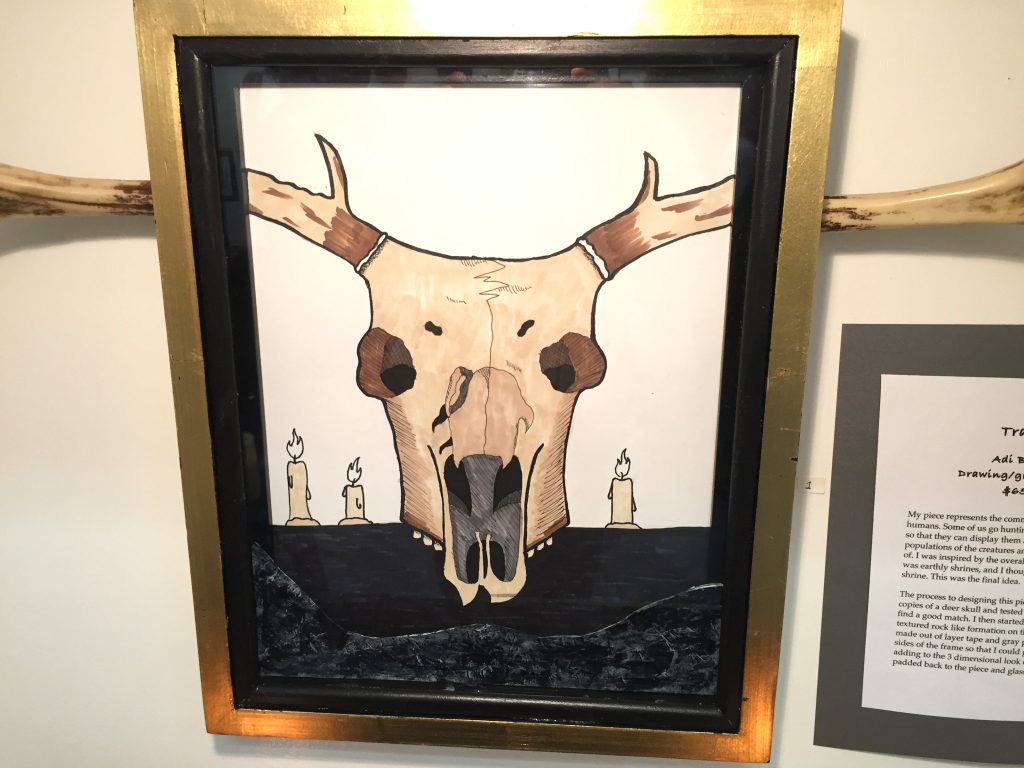
Adi Banks
My piece represents the commodification of animals and nature by humans. Some humans go hunting and kill creatures just for their heads so they can be displayed as trophies. It is detrimental to the populations of the creatures and to the ecosystems that they’re a part of. I was inspired by the topic of “Earthly Shrines” and thought this was a fitting expression.
Adi Banks
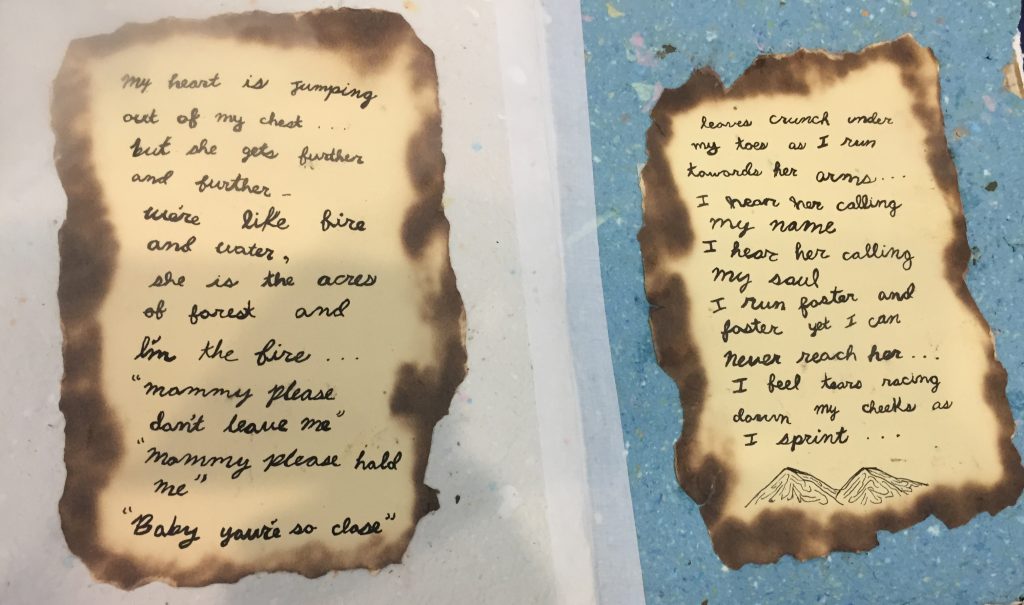
Hajar Ahmed
I write poetry to change your perspective
I write poetry to raise awarenesses
I run to the battlefield with my pen in hand
I raise my arms to the sky and feel the breeze running through my fingers
All this imagery wouldn’t have been possible without experience.
The Minnesota Valley Wildlife Refuge provided a safe haven where
you can be one with nature and escape a world of urbanization that’s
too familiar. Taking a moment to take in other life forms unifies the
living with the dead and the empty with the full.
It’s an accurate representation of life.
Hajar Ahmed
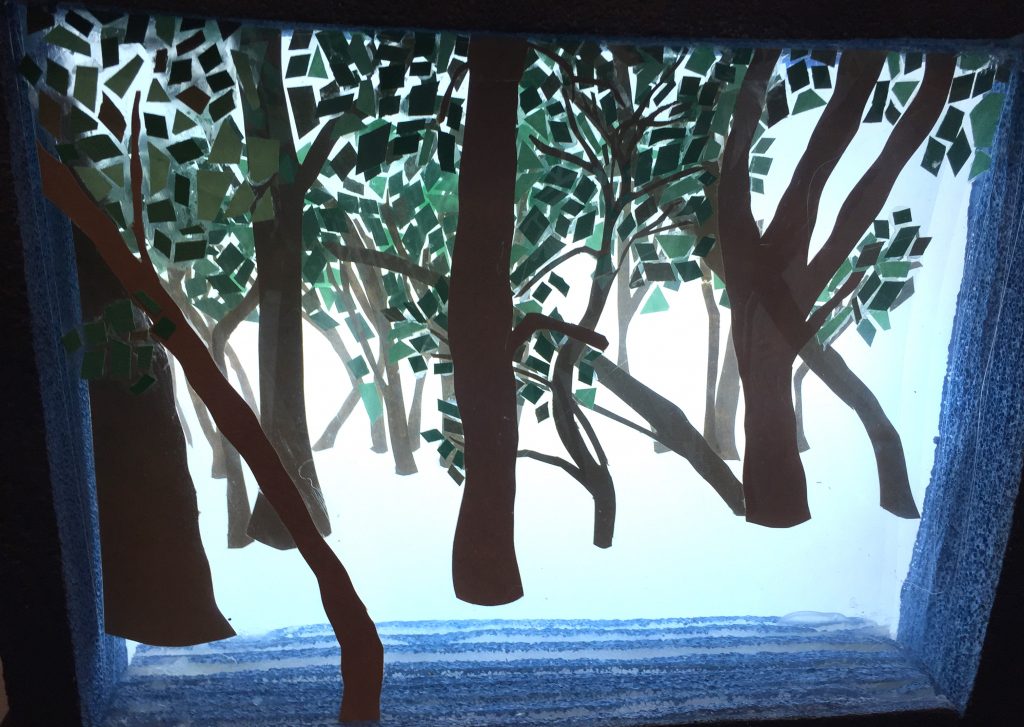
Haley Larson
My piece was inspired when we went out into the woods, and we connected with the biggest tree we could find. While doing this, we were given a chance to feel how the life in the forest communicated with each other. Looking around, I was really inspired by the layered feeling the forest has when you’re in the center of it: trees and plants and bushes stack together to create one big picture that one tree could never establish on its own. The leaves are organized in a mosaic fashion to evoke the feeling of a stained glass window, allowing light to flow through freely. The frame is made of styrofoam to symbolize the restricting effect synthetic goods have on nature.
Haley Larson
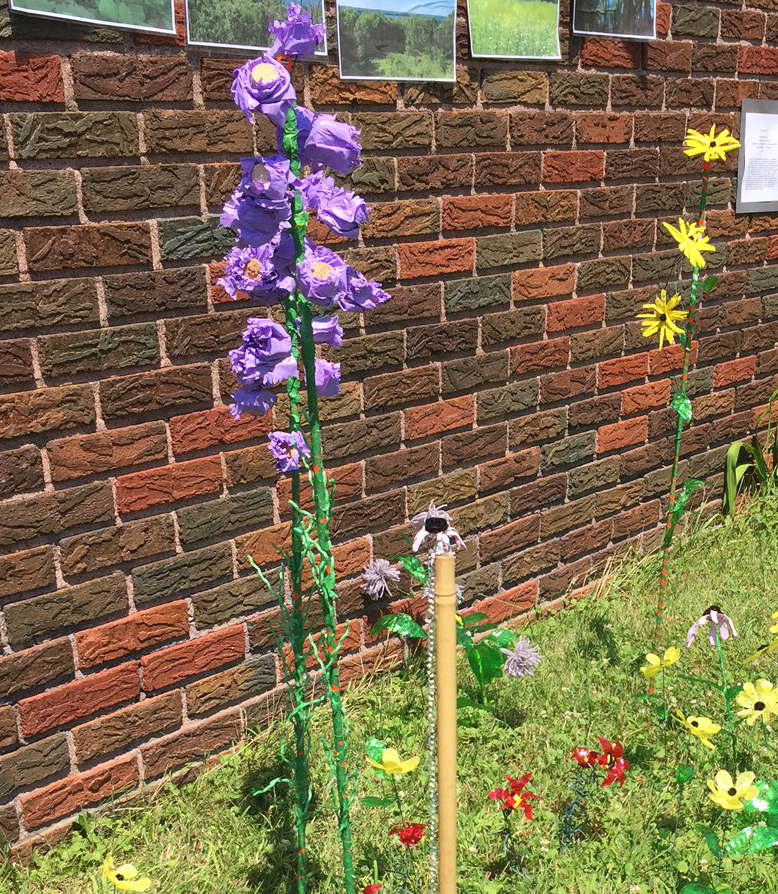
Adi Banks, Haley Larson
Serena Raths
We took inspiration from the Minnesota prairie lands: the colors, as well as the specific species that reside there. Our goal was to demonstrate the ways in which humans will need to work with nature to maintain environmental sustainability in our modern world. By using recycled materials, we show how humanity must design their urban spaces and consumer goods to work with the environment instead of against it.
Adi Banks, Haley Larson, Serena Raths
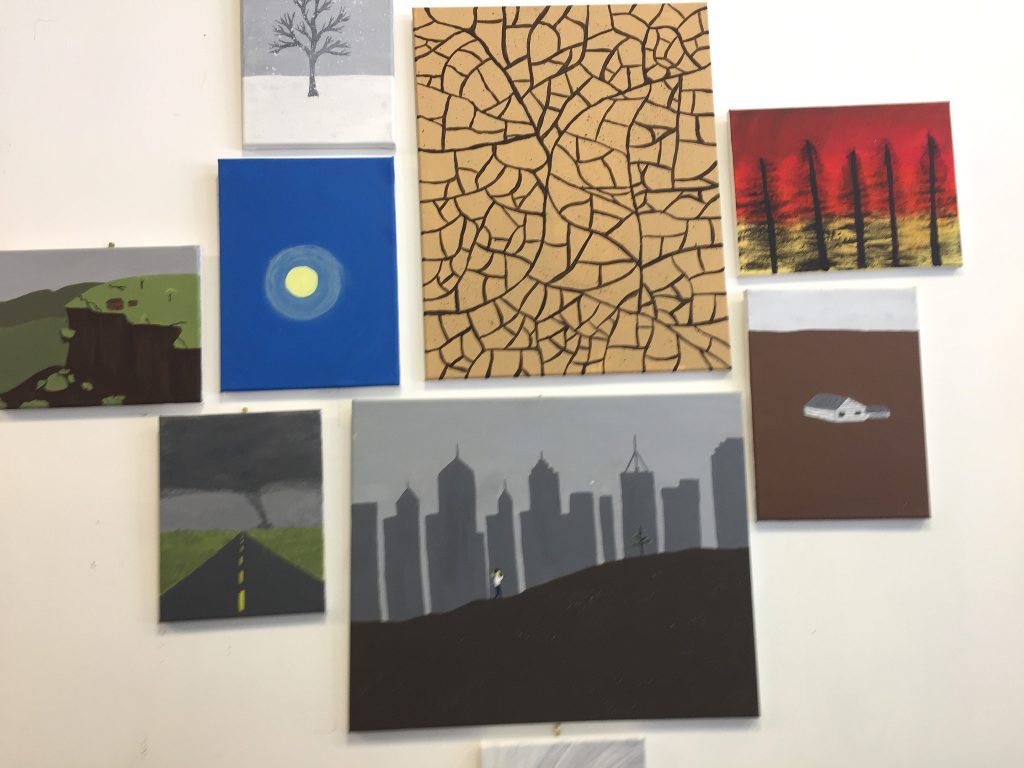
Ana Kirshner
My original idea was very vague, and it was supposed to be paintings of human activity that resulted in global warming and environmental damage, like deforestation, factories, pollution, etc., as well as paintings of natural disasters. Eventually I moved on to the slightly more subtle, like flooding from rising sea levels or floods that are occurring from human actions and making them more devastating and irregular. Originally the paintings were just arranged in a cluster, but then I settled on a tree-like arrangement to represent connectivity and a symbol of nature. The main point of this piece is to prompt self reflection. Are you going to help preserve and protect the environment, or not? Will you carry a shovel to plant a tree or an axe to cut a tree down?
Ana Kirshner
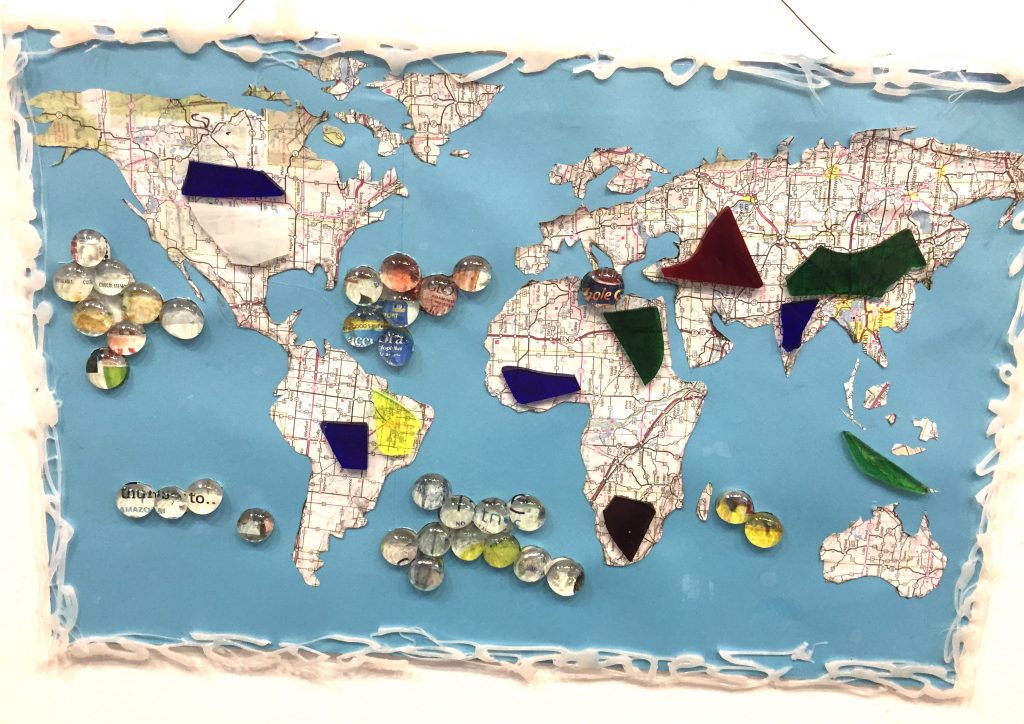
Greta Shore
Transparent
In making this piece, I sought to represent that the epidemic of plastic pollution can be partially attributed to multi-national corporations whose products are either not biodegradable or are not easily disposed of effectively, which in turn relates to ideals of convenience and profitability upheld by these corporations. The general population also neglects their responsibility in preserving the earth and dealing with waste effectively.
The artwork contains a hand-drawn and cut map of the world affixed onto blue paper, which is then disrupted by shards of broken glass, highlighting areas that produce the most pollution. The unaltered map appears more balanced and visually appealing, as it fits our idea of what our world looks like, while the impact of corporations and the ignorance and wastefulness of the general population disrupts this. This is done to redefine our default view of our planet and shine a light on humanity’s wastefulness and disregard.
Greta Shore
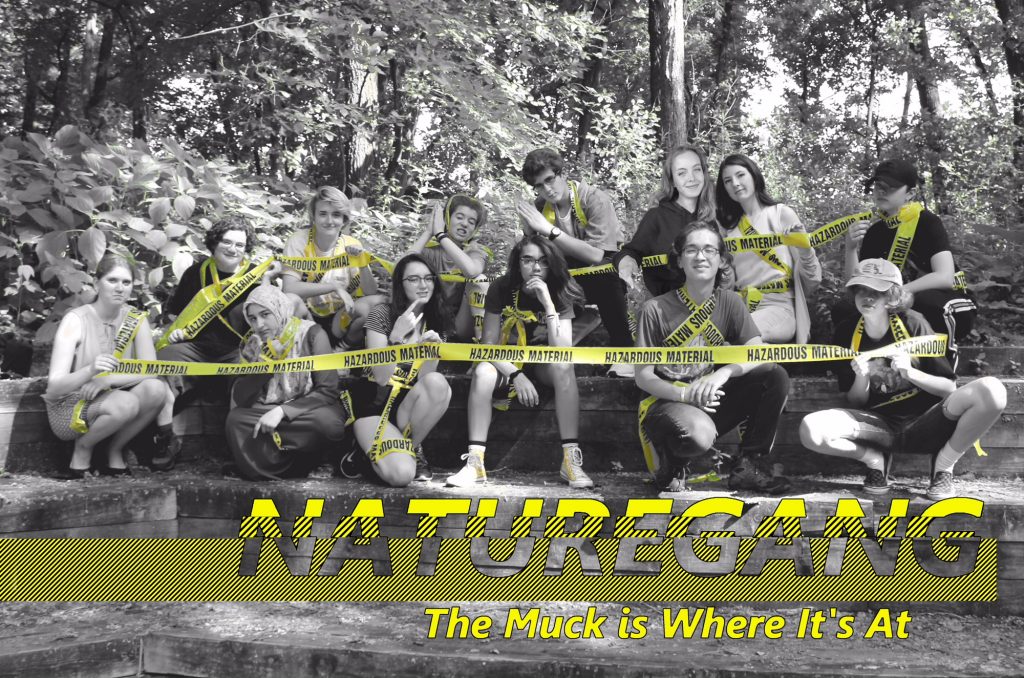
Get ready world! It won’t be business as usual with this group.
Photograph by Michael Croswell




This is a very inspired group of folks, responding to an important, well-designed provocation. Bravo to each of you! Your articulate reflections make your works even more meaningful.
I loved seeing the original art of these young people. AMAZING! Having raised an artist who is using that now professionally to help people heal- This was ever so lovely, and inspiring.